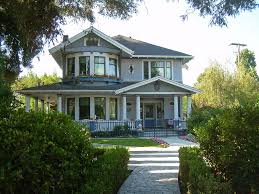
MORE Realty
Al Cronemiller
Licenced in the State of Oregon
Historic Restorations, Stay true to the period.
Here is a great related article
Across the United States following the end to the first world war in 1918 a building boom started. This was not only a building boom where we were to see beautiful craftsman homes spring up, but also an end to the Victorian era homes.
Many houses were built from 1919 to 1921 and their appearance took on many different looks. With straight lines The Craftsman era had arrived.
With all your historic restorations, stay true to the period you’re working with.
Let’s say our project is a 1920 Craftsman bungalow home with 2 stories. Any home that is almost 100 years old will have some rot in it. If the home that you are re-doing has a basement there may be less rot than a home where the wood is closer to the ground.
This is because the older houses did not have vapor barrier (black Plastic) under the floor, causing moisture wicking up through the wood structure of the home.
With the restoration of the exterior of the home, there will be some or many areas that will need to be sanded for proper preparation prior to painting. With this being built in 1920 there will be lead found in the exterior paint. It is the additive that made paint durable in those days.
In order to disturb the lead base paint in the form of sanding you will need to have someone certified in lead base paint removal to remove it. This will apply to the interior walls and woodwork as well as the clear coating they used to finish their wood floors back then.
There are very large fines for not doing the right thing when it comes to compliance with lead base paint removal.
If the home you are doing a historic restoration on is in a historic district the city may have regulations on the paint colors, additions and alterations. Make sure you check.
The paint color combination that you choose will need to be a combination of 3-4 different paint colors. You will have the body color for the first floor, the body color for the second floor, the trim color that would be all windows, doors, fascia, batter boards, columns and look outs. The fourth color would be an accent strip if your home construction allows it. There are many sources to find great historic colors. Lowes offers a full line of historic paint colors.
Your paint job will only look as good as the preparation was. The better everything is sanded smooth, professionally caulked and primed the better your final paint job will be.
Make sure all the windows have been glazed properly on the exterior, this will ensure a good paint line around the glass.
After the home, has been prepped and primed a two-coat paint job is required for proper penetration and coverage. Your primer can be colored to match the final coat of paint; this will ensure two coats is enough.
As with the restoration of exterior any old place special care has to be taken to make sure everything is still secured properly, no shingles are missing, the siding is in good shape and everything is sound structurally.
One thing I learned when doing historic restorations was that E- Bay is your friend. They are a great source of anything needed from that era. I can’t express enough the importance of buying Art- Deco style light fixtures of the 1920’s, stay true to the period. If you shop enough you should be able to find enough light fixtures, door knobs and strike plates, hinges, knobs and anything else that will add that special historic touch.
When restoring anything from the 1920’s make sure the patina is not removed! Light fixtures can be carefully cleaned and re-wired with cloth covered wire to match the original wiring. If a light socket is broken they are easily purchased at Amazon along with the wire.
With any old house, you are going to have many plumbing, electrical and heating problems. Many of the homes from the 1920 era did not have heat upstairs so running a 220 circuit up there for some base board heat will be a good idea. Remember the baseboard heaters were not from that era but they seem to be the most cost effective way to get heat upstairs and keep cheating to a minimum.
In my opinion all historic homes deserve to be restored to their original charm. There not like a newer home, they cost more. There not for the faint of heart.
Take time to locate your perfect Craftsman home in the Salem, Oregon area. You can search easily at https://homesforsalesalemoregon.net/. Having spent a lifetime restoring historic homes I can help you with all you home buying needs. Let me know how I can help. al@cronemiller.com
.




Join The Discussion